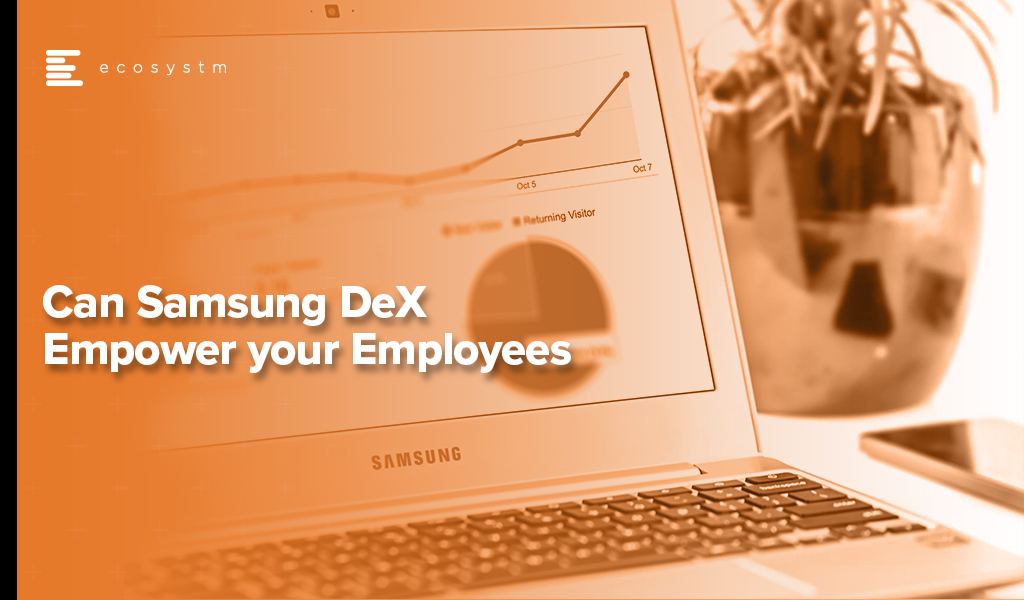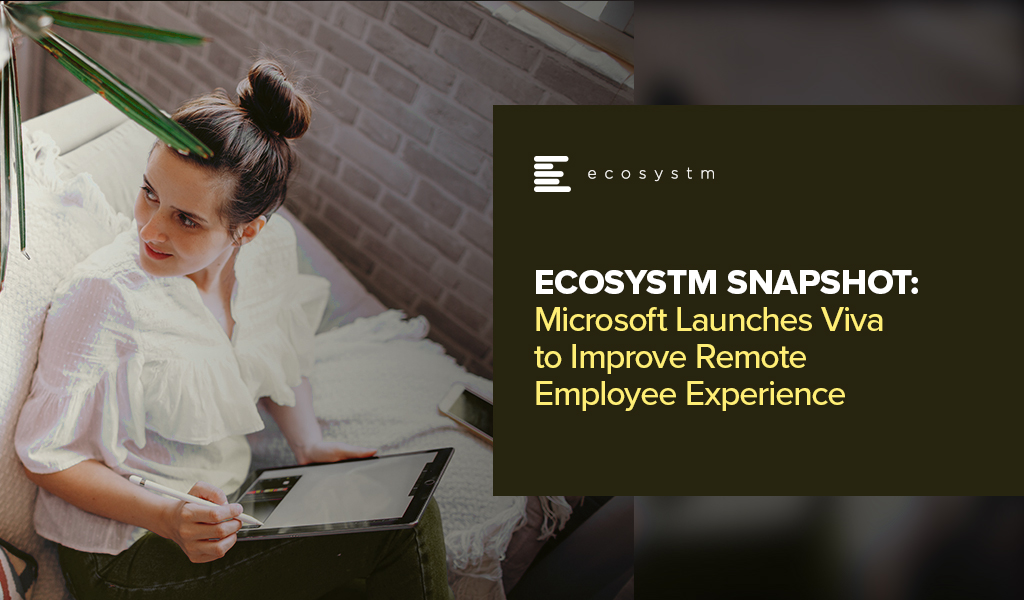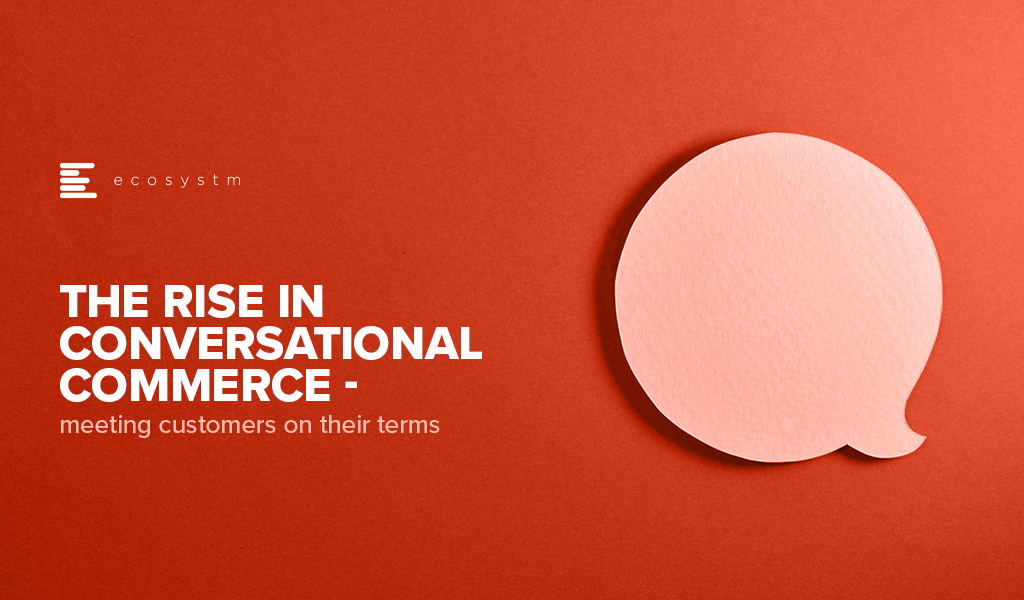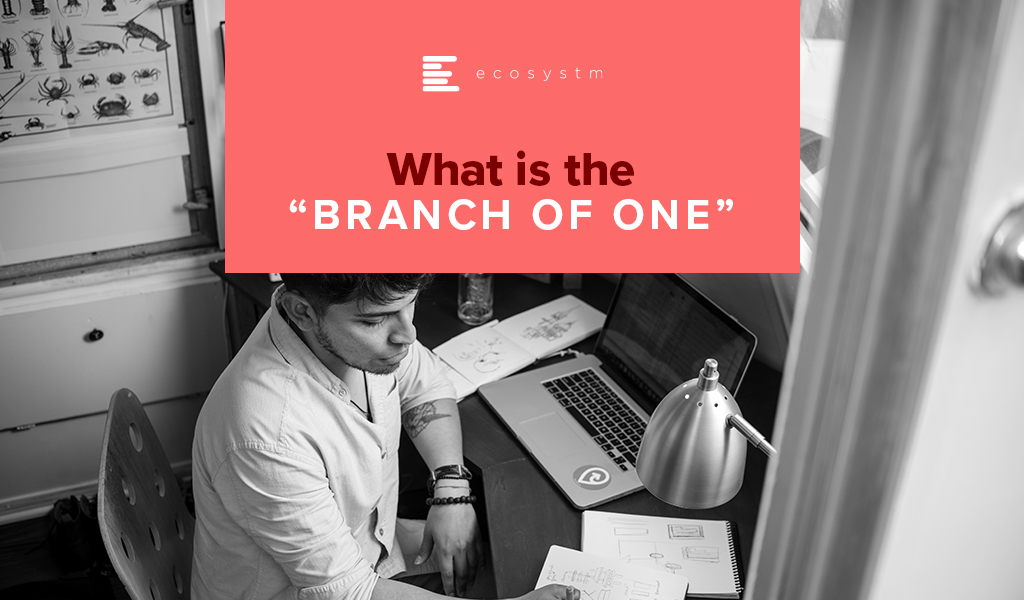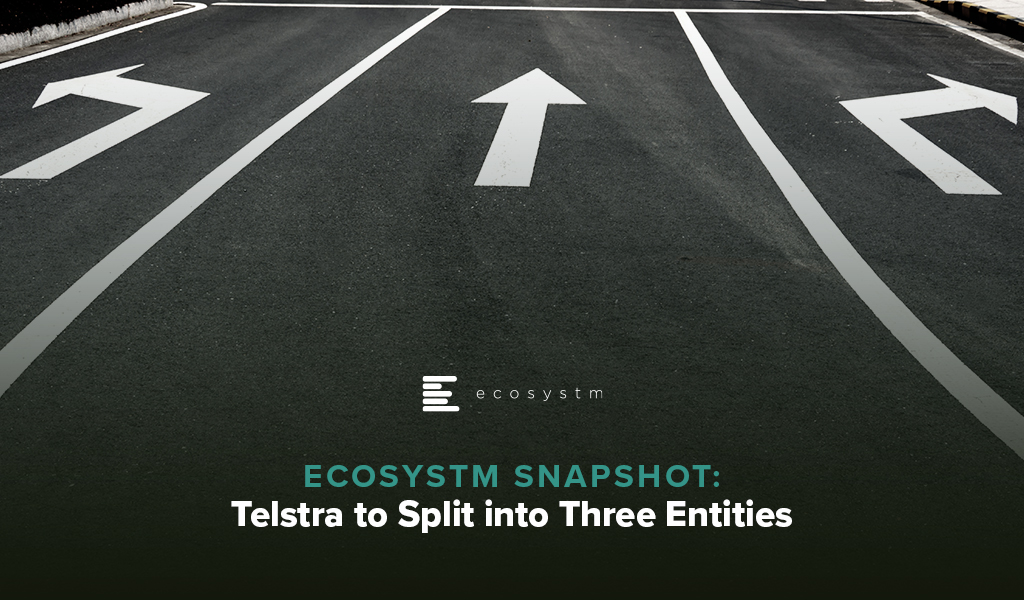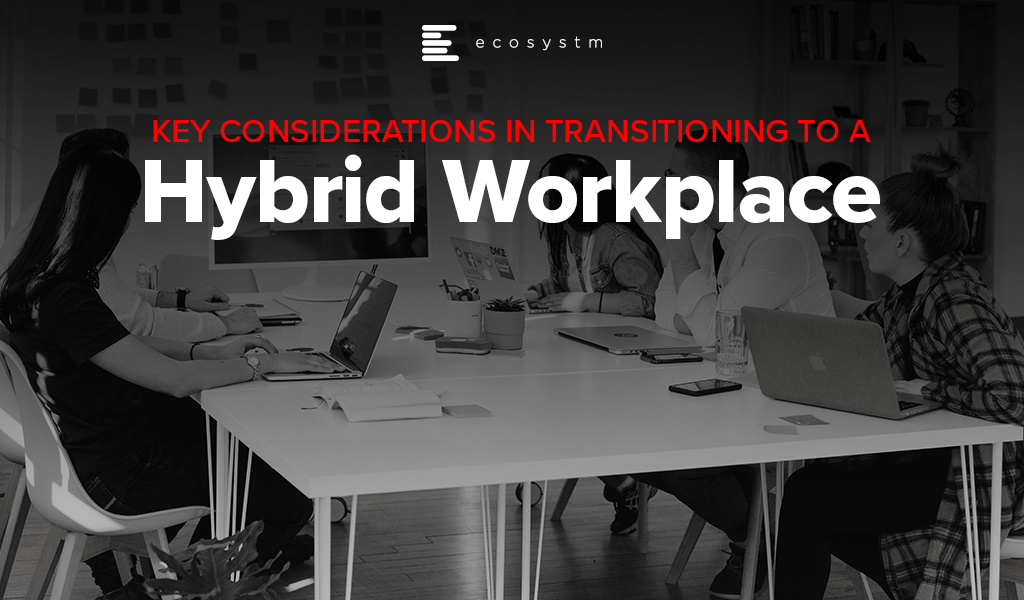2020 was a strange year for retail. Businesses witnessed significant disruption to supply chains, significant swings in demand for products (toilet paper, puzzles, bikes etc!) and then sometimes incredible growth – as disposable income increased as many consumers are no longer taking expensive holidays. Overall, it was a mixed year, with many retailers closing down and others reporting record sales. The grocery sector boomed – with many restaurants and fast-food providers closed, sometimes the supermarkets were some of the few remaining open retailers.
For many retailers, technology has become a key enabler to their transformation, survival and success (Figure 1).
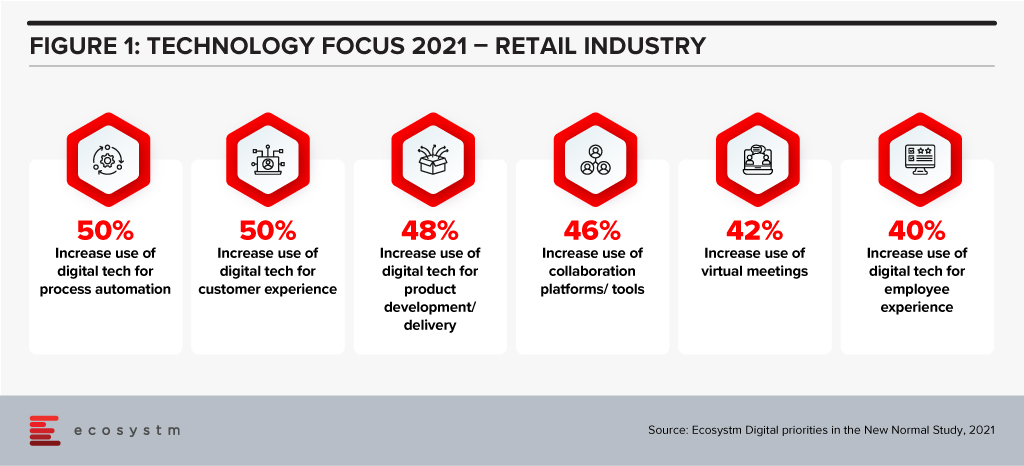
Woolworths, Australia’s largest retailer, operates across the grocery, department store, drinks, and hospitality sectors. They hold a significant market share in most markets that they operate in. The company had a strong 2019/20 (financial year runs from July 2019 to June 2020) with sales up 8% – and in the first half of the 2020/21 financial year, sales were up nearly 11%. But the company is not resting on its laurels – one of its 6 key priorities is to “Accelerate Digital, eCom and convenience for our increasingly connected customers”. This requires more than just a deep technology investment, but a new culture, new skills, and new ways of working.
Woolworths’ Employee Focus
Woolworths has committed to invest AUD 50 million in upskilling and reskilling their employees in areas such as digital, data analytics, machine learning and robotics over the next three years. The move comes as a response to the way the Retail industry has been disrupted and the need to futureproof to stay relevant and successful. The training will be provided through online platforms and through collaborations with key learning institutions.
The supermarket giant is one of Australia’s largest private employers with more than 200,000 employees. Under Woolworths’ ‘Future of Work Fund’ their staff will be trained across supply chain, store operations, and support functions to enhance delivery and decision-making processes. The retailer will also create an online learning platform that will be accessible by Woolworths employees as well as by other retail and service companies to support the ecosystem. Woolworths has plans to upskill their staff in customer service abilities, leadership skills and agile ways of working.
Woolworths’ upskilling program will also support employees who were impacted by Woolworths planned closures of Minchinbury, Yennora, and Mulgrave distribution centres due in 2025.
Woolworths’ Tech Focus
Woolworths has been ramping up their technology investments and having tech-savvy employees will be key to their future success. In October 2020, Woolworths deployed micro automation technology to revamp their eCommerce facility in Melbourne to speed up the fulfilment of online grocery orders, and front and back-end operations. Woolworths also partnered with Dell Technologies in November 2020 to bring together their private and public cloud onto a single platform to improve mission-critical processes, applications and support inventory management operations across its retail stores.
Future of Work
For many years, Ecosystm has been advising our clients to invest more in the skills of the business. Every business will be using more cloud next year than they are this year; they will suffer more cybersecurity incidents; they will use more AI and machine learning; they will automate more processes than are automated today. More of their customer engagements will be digital, and more insight will be required to drive better outcomes for customers and employees. This all needs new skills – or more people trained on skills that some in the business already understand. But too many businesses don’t train in advance – instead waiting for the need and paying external consultants or expensive new hires for their skills. Empowered businesses – ones that are creating a future-ready, agile business – invest in their people, work environment, business processes and technology to create an environment where innovation, transformation and business change are accepted and encouraged (Figure 2).
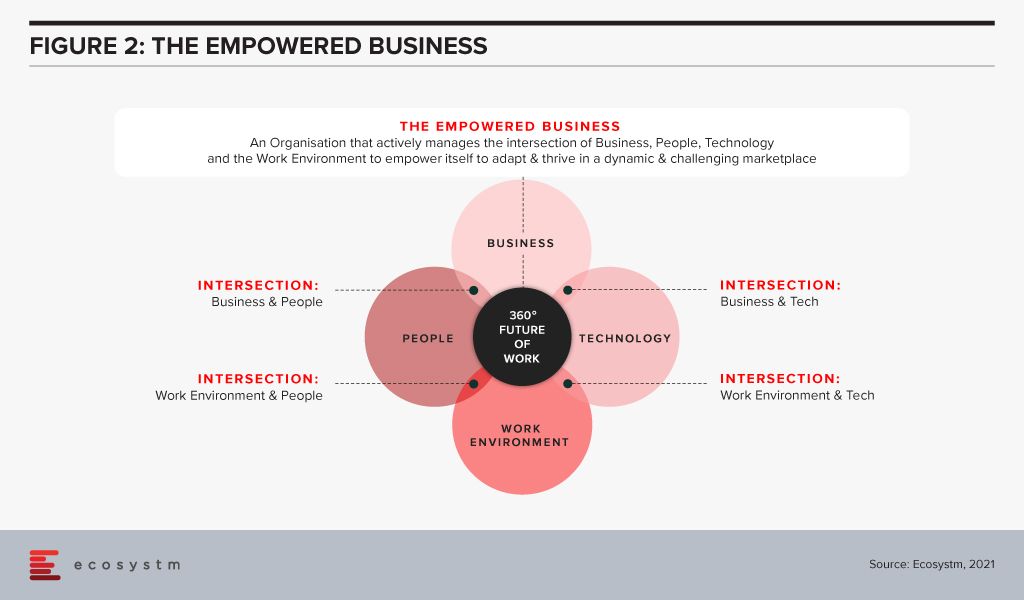
Empowered businesses can adapt to new challenges, new market conditions and respond to new competitive threats. By taking these steps to upskill and empower their employees, Woolworths is building towards empowering their own business for long term success.
Transform and be better prepared for future disruption, and the ever-changing competitive environment and customer, employee or partner demands in 2021. Download Ecosystm Predicts: The top 5 Future of Work Trends For 2021.

Over the past 3-4 weeks I have spent some time using Samsung DeX (shortened from “Desktop eXperience”) as my primary desktop environment. DeX has been around for a number of years, and I have dabbled with it from time-to-time – but I have never really taken it seriously. My (incorrect!) opinion was that a mobile chipset isn’t powerful enough for a PC-like experience. But for most of the last year, I have been using a Samsung Galaxy Book S laptop as my primary computing device – and this Windows 10 laptop runs an ARM processor which is the very same processor that powers many Samsung and other Android phones. Microsoft also has an ARM-based PC that I have used successfully (the Surface Pro X) which prompted me to rethink the opportunities for DeX. A number of clients also asked for my thoughts on DeX so I figured it is time to take it seriously as a potential end-user computing environment.
This Ecosystm Insight is a summary of the client report and is the first of a few Insights into DeX. In future, I plan to trial the dual-monitor ability for DeX (developed by VoIP – an Australian ICT consultancy). These Ecosystm Insights won’t cover how to use Samsung DeX. If you are looking for this information, Gizmodo has published a good piece here.
The Trial
In trialling Samsung DeX I attempted to cover all usage scenarios, including:
- Native DeX with the phone connected to a DeX station and both wired and wireless keyboard/mouse, using both wi-fi and 4G (I live literally 50 metres outside of 5G coverage!)
- DeX through Windows 10 using both wi-fi and 4G and a wired mouse and keyboard
- Native DeX connected to a monitor using the Microsoft wireless display adapter (again using both wi-fi and 4G)
In the native DeX environment I worked in the traditional Microsoft productivity apps, collaboration apps (such as Teams, Zoom, Webex, Google Meet), Google productivity apps, web applications (sales, CRM & ERP), file sharing applications (OneDrive, Google Drive), imaging applications (photos, video, image sharing), social applications (Twitter, LinkedIn, Facebook, Instagram etc) and other native Android apps – some of which were optimised for DeX, and some of which were not. I tried to imitate the information worker’s experience; and that of a site or specialist user. I used it as a primary computing environment for most of my work for 3-4 weeks. I didn’t just consume content, but also created content – I needed to be able to sign and attach Adobe documents, create new reports, conduct deep data analysis in Excel and create figures and move them between Excel, Word and PowerPoint. I created and shared leads in CRM systems, did company accounting in a financial application and even had some time to try out some gaming applications.
I have also trialled a Citrix and Amazon virtual desktop in all environments – running productivity applications, finance applications, graphics intensive applications and web apps.
Findings
My broad finding is that DeX is not a desktop replacement for power users – but there are plenty of roles within your business who would find that DeX is a capable environment that will allow them to get their job done.
I was planning to discuss the positive features of DeX, but the reality is that it is simpler to understand its limitations. And, most limitations are related to the Android applications or network lag introduced in virtual desktop environments using 4G.
- The Microsoft productivity applications in Android are all scaled back versions of the desktop applications. They do not contain many of the features and functions that the desktop versions have. For example, when I needed to format headings in a report, the fast format options (e.g. to make text a “heading 2”) don’t exist in the Android version of Microsoft Word. Power users will find these applications don’t deliver all of the functions they need to get their job done.
- Those who need broader functionality beyond the Android applications will benefit from a virtual desktop environment. Both Citrix Workspace and Amazon Workspaces delivered a very usable Windows 10 experience (although I found the base configuration to be a little slow). For existing users of virtual desktops, it is a no-brainer to roll them out to mobile devices if required. But would you add a virtual desktop environment to your existing desktop fleet just to enable DeX? I can’t answer that – as it is another environment to manage and support for your end-user computing and IT support teams. But again, for power users, this is not an ideal environment. It does EVERYTHING you want it to do – but it might not do it fast enough to satisfy all users.
- It’s not a mobile environment. This isn’t something you use on your phone (although I believe you can use it on some Samsung tablets). You need a monitor, keyboard, and ideally a separate mouse for DeX to work. It doesn’t replace a laptop for a mobile worker.
- DeX does not natively support dual screens or monitors. I found that I would switch back to my PC when I needed the productivity of two screens, as I personally find application switching on a single screen to be a productivity killer. BUT – this is changing – VoIP has developed a capability to run DeX across dual monitors (I will be testing this shortly and will post the results).
- When using DeX natively and not using a virtual desktop, the screen sharing features of collaboration apps don’t work in the way you expect. The screen that is shared is NOT the DeX desktop screen but the horizontal mobile phone screen. This is a significant issue if you want to share a Word, PowerPoint, or Excel file or another “full desktop screen” application. DeX users can view other people’s shared screens, but not share the screen effectively themselves.
- DeX introduces a new environment for your helpdesk to support. DeX isn’t Windows, it isn’t cloud, and it isn’t exactly native Android. Your tech support team will need to be trained on DeX and be required to learn a new user environment. It introduces an additional OS into the mix. That means at least some service desk technicians will need to be trained on the environment. As it is still running in Android, it doesn’t particularly require specific QA or testing for your business mobile applications. But to take full advantage of the larger screen real estate that DeX facilitates, you may need to make some changes to how applications perform in DeX.
Despite these challenges, DeX is a very capable environment. Running a virtual desktop was a breeze and performed far better than I would have imagined. I was worried about lag and had introduced many opportunities for it to run slowly – a wireless mouse and keyboard, wireless display adapter, running over wi-fi, and 4G using a virtual desktop in the cloud – and the lag was barely noticeable. I was impressed with this and understand how DeX could even be used to support legacy applications and environments too.
The convenience of having your phone at your fingertips – being able to respond to text messages on the large screen, taking calls using the same Bluetooth headphones that you use to watch video content on the larger screen, not to mention the security of taking your “PC” with you in your pocket when you head out to lunch or home for the day – adds to the value of DeX. The concept of a “PC in your pocket” has been around for a while – however most Samsung mobile users don’t realise that they have one there already!
Target Roles
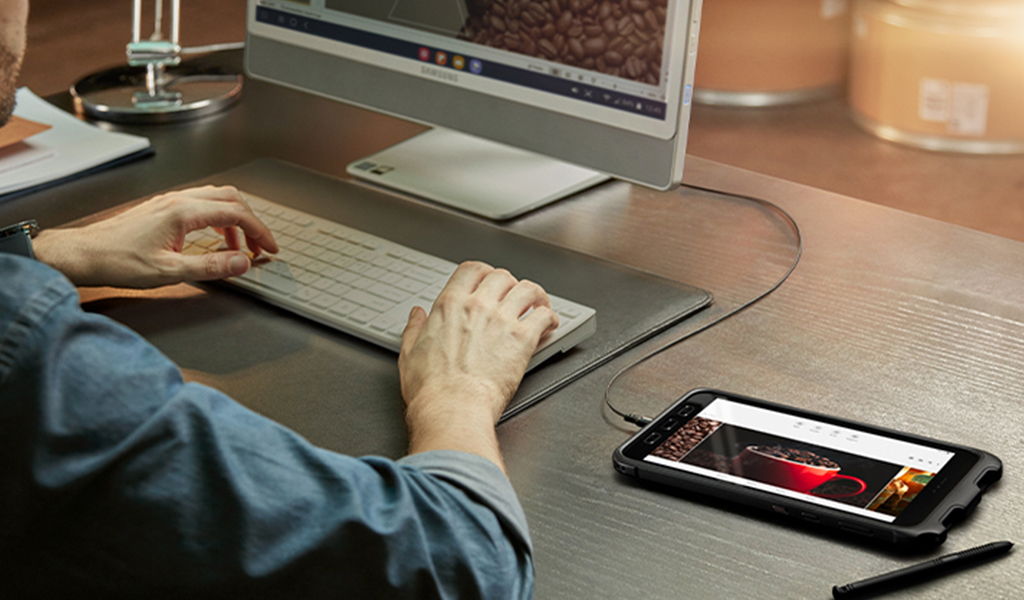
Who are the business roles or personas who could benefit from it? The simple answer is that anyone who uses a desktop part-time would benefit from DeX. Many businesses have shared PCs for multiple users or dedicated PCs for users who don’t use a PC full-time. These might be site managers in constriction, store managers in retail, nurses, security staff, librarians, government or council workers. The significant factors that define potential DeX users are:
- They spend a fair amount of time away from a PC
- They still need a PC for reporting, document sharing, content creation etc
- They return to a fixed site regularly (like a store, office, site office etc)
Again, it is worth noting that DeX doesn’t replace a laptop or tablet. It is not for mobile computing – it replicates fixed computing environments in a more mobile and potentially cost-effective form factor. Remember that the employees need a screen, mouse, and keyboard (you can use the phone as a mouse, but it is not ideal). They also need the charging cable to connect to the computer. If they are making regular video calls then I suggest a phone holder that allows the charging cable to stay connected and the phone to be angled so as others can see their face (wireless chargers tend to sit too far back).
And while DeX is a secure solution, and can benefit from Samsung’s Knox security platform and capabilities, pairing DeX with a secure branch of one style solution – such as that offered by Asavie, now a part of Akamai – has the ability to add end-to-end security and secure application/data access that your employees desire and your business needs.
The opportunities for DeX outweigh the challenges. I am certain that most businesses have potential DeX users – employees who reluctantly carry around a laptop, or who have to come back to a location for their computing. They might be employees who use their phones for image capture and spend much of their time transferring photos to a PC to store them into a corporate system (such as an OH&S team member, or a repair and maintenance provider for a company). It could be a brand salesperson who spends time in various retailers or on the road but still need computing for product training, entering sales figures, and other administrative tasks.
If your business already offers Samsung devices to your employees, switching on DeX is a no-brainer. Start with a trial in a limited employee pool to determine the specific challenges and opportunities within your business. If you are already using virtual desktops, then this is the easiest way to start – roll out the app to your Samsung mobile devices and you have a ready-made portable computer in your employees’ pockets.
The past twelve months have been tough. Most businesses in Singapore (68%) still haven’t seen revenue recover to pre-pandemic levels. Many budgets are down and you are likely to have a long list of spending options that might help you grow revenue and pull your business out of the pandemic-induced slump. Even if your business is doing well, the pressure on budgets is real.
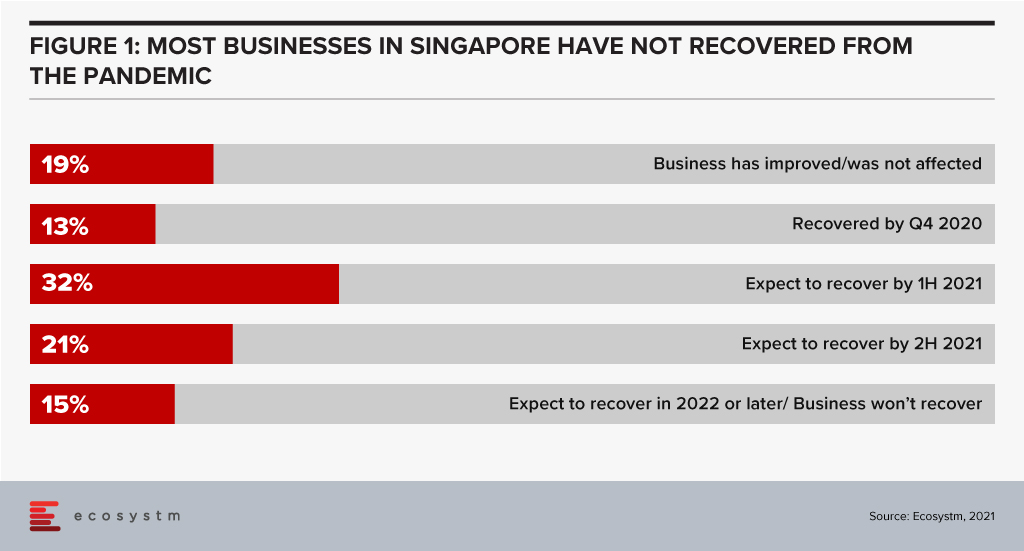
Increasing your CX Spend
Despite the pressure on budgets Ecosystm data makes a strong case to not cut your customer experience (CX) spend! Businesses in Singapore that are cutting their CX spend are less likely to return to growth, more likely to be competing on price (hence cutting margins), not focused on their digital and omnichannel customers, and have lower levels of innovation. Funnily enough, these are also the businesses with complex, legacy systems which need more focus to provide an improved CX! To be quite frank, businesses in Singapore who are cutting CX spend are setting themselves up for failure. With other businesses increasing CX spend, the gap between the customer experiences will grow to a point where customers will leave and it will be hard to catch up.
Prioritising your CX Spend
So now that you have secured your CX spend, where will you get the biggest bang for your buck? Let’s look at where businesses in Singapore are focusing their CX initiatives in 2021.
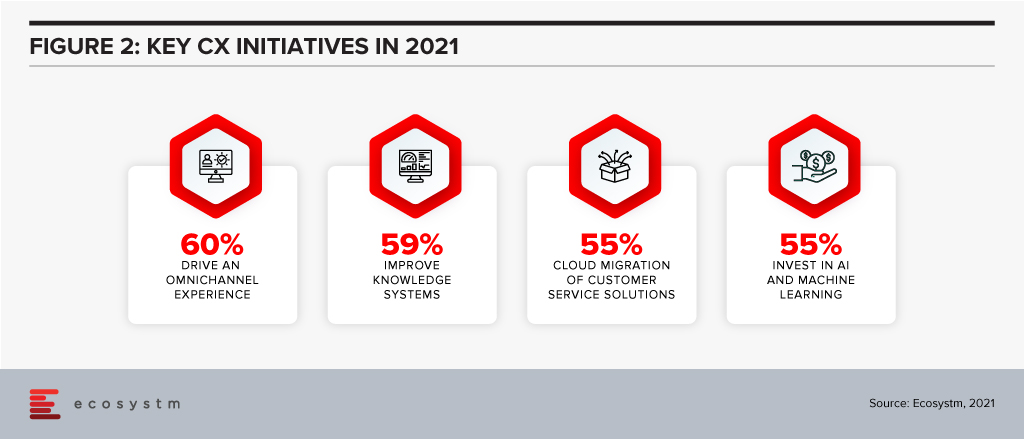
Offering an omnichannel experience. Your customers expect more than just a great digital experience – they want the right experience at the right touchpoint. The CX leaders in Singapore (who, unsurprisingly are often the market leaders) are already offering great omnichannel experiences, so this is quickly becoming about catching up – and not about getting ahead. Providing a consistent, personalised, and optimised experience across your digital touchpoints needs to be a top priority for your business today. If you are not offering conversational commerce solutions, start that strategy as soon as possible – you need to be where your customers are today. Extending this to physical channels and broader ecosystem partners should also be on your agenda.
Improving knowledge systems. Your knowledge systems don’t do what they say on the box. They don’t provide answers to questions – for employees or customers. In fact, if your customer service agents get asked a question they don’t know the answer to, their number one source for answers is actually their colleagues or team leaders – NOT the knowledge management system! Start investing in systems – or ideally a single system – that help your employees get better, faster answers to questions. Make sure that the system is providing the same answers to both your employees and your customers across all touchpoints – physical and digital.
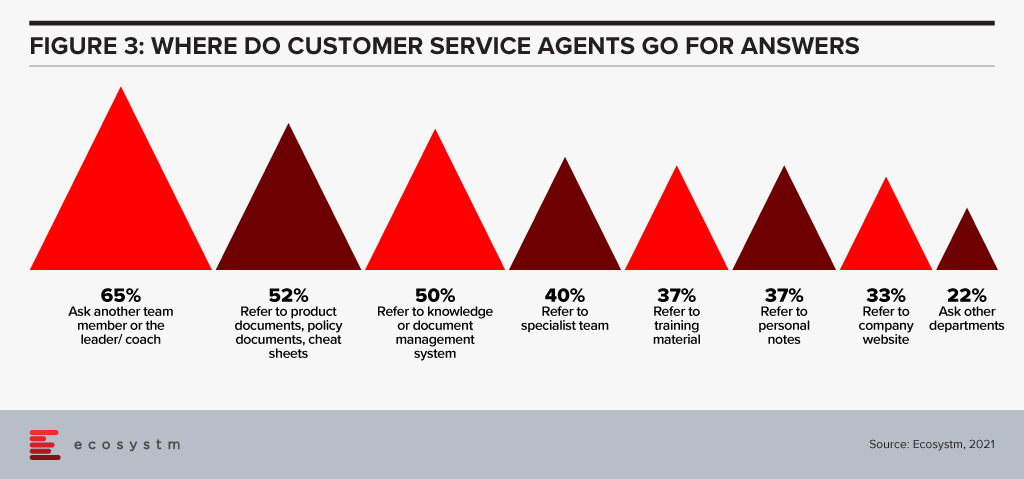
Migrating customer service platforms to the cloud. Over half the businesses in Singapore that we assessed have this as a top CX priority. Cloud solutions offer faster time to value, lower management costs, give access to more regular improvements and often provide the ability to easily integrate with partners who offer product extensions and customisations. This trend will continue in 2021 and 2022 as more businesses realise that their legacy customer service or contact centre platform is inhibiting their ability to innovate their customer experience. These systems also help businesses to stay compliant and reduce the reliance on internal IT – which has traditionally struggled to keep up with the fast-changing nature of the contact centre and customer service teams.

Investing in AI and machine learning. Many businesses are using AI to provide the personalised and optimised customer experiences they aspire to. AI and machine learning are allowing businesses to create personalised offers, offer a next-best action and automate services. Advanced banks in Singapore can create interest rate offers for each individual customer based on their credit profile and history. 46% of businesses in Singapore are already using AI to offer recommendations for customer service agents, 44% to optimise or test messaging and campaigns and 43% to provide faster, more accurate access to information and knowledge. 18 months ago, AI was a business differentiator – allowing your business to create a stand-out CX. Today AI is quickly becoming a standard practice – the battle now is around using AI to create personalised and optimised experiences.
A great customer experience will be the most important factor in lifting your business to pre-pandemic growth levels and helping your business remain competitive in today’s tough business conditions. When it comes to CX, there is no such thing as “saving your way to growth”.
Your opportunity to drive greater business success lies in your ability to better win, serve and retain your customers. Refresh your customer strategy and capability today to make 2021 an exceptional year for your business.

Much has been written (and discussed on webinars) about the demands of managing the work-from-anywhere experience. We were all thrown into this last year, and are still working our way through the challenges. For most employees it has been a positive experience – but there is still a lot more we can and should do to improve experiences for employees and their managers.
Workplace Analytics Gains Significance
At the start of 2020, my colleague Audrey William and I discussed the need for workplace analytics when predicting workplace trends for the year, but the pandemic delayed many of these investments. As working from home (or from anywhere) becomes a long-term trend, we are learning that managers need tools to better empower their employees to deliver what the business needs. There are many reports of employees working overtime; working longer days; not taking breaks; being in back-to-back meetings for days on end; skipping meals; and wearing themselves out.
There are many benefits of remote work – employees have the freedom to manage the day as they choose, they have no commute and (conceptually) more harmony between work and home duties. But there are also many processes that are harder. It is not as easy to find the right person to connect to or learn from, get the best information or answer to a question, and get coaching and new skills. Managers need to understand their employee work experience because they don’t sit with or supervise them all day. Self-service for employees used to mean walking around the office and having a conversation or meeting. Today, we need to make these outcomes easier for every worker regardless of location.
Microsoft Lauches Viva
Microsoft has announced the release of Viva – a new product suite to help businesses overcome these challenges. They have published a “Future of Employee Experience” video here as part of the launch – but don’t watch it – or if you do, be prepared to be disappointed when you see the actual products… The good news is that we have moved from oval-shaped phones in Future of Work videos in 2000 (because all web content is designed for round screens right?) to transparent phones in 2010 (who needs to be able to see what’s on the screen?) to virtual screens in Future of Work videos in 2021… Guess they’ll never become a reality either!
Based off the early reviews and commentary about Viva, I believe Microsoft is really onto a winner here:
- Managers need better analytics about how their team spends their days and employees need insights as to how to increase their productivity or find a better balance in their life.
- Employees need to find the people and information in their business to connect with and learn from – how often do employees reach out to others to ask for help or information when the answers they were looking for weren’t too far away. This information needs to be easier to find – even surfaced to employees before they go looking for it.
- Everyone in your business needs to keep learning within their flow of work – the formal training programs offered by most businesses today are useless if employees are too busy to take the course.
- Business leaders need to drive cultural change more effectively or support their broader business initiatives by linking employees with the information and insights that can help reinforce or change organisational culture.
Viva should support these outcomes. Microsoft is partnering with many other businesses to make this work (systems integrators, training providers, workplace and HR platforms etc). If the products deliver as promised, they might provide the missing link that many businesses need today to keep their employees safe, productive, happy and connected.
Learn about the factors that have been accelerating the shift towards the new ways of working. The top 5 Future of Work Trends For 2021 are available for download from the Ecosystm platform. Signup for Free to download the report.

Customer needs are changing. Quickly. In 2020 having a great digital strategy went from being a nice-to-have to an absolute necessity. And in 2021, businesses that have great omnichannel experiences will go from a small minority to a majority as customers demand that they are served on their terms in their chosen platform. Only 14% of businesses in Singapore offer a complete omnichannel experience today – serving customers on their terms regardless of the location or platform (Figure 1). These businesses are setting the benchmark that the rest of the market needs to meet soon.

The Growing Importance of Social Media in Delivering Customer Experience
Chat and messaging are quickly becoming the normal way to interact with businesses – the view of a few years ago that “no one wants to chat with a bot” has quickly turned around. Now virtual assistants and chatbots are the second most important self-service channel for businesses in Singapore (Figure 2).
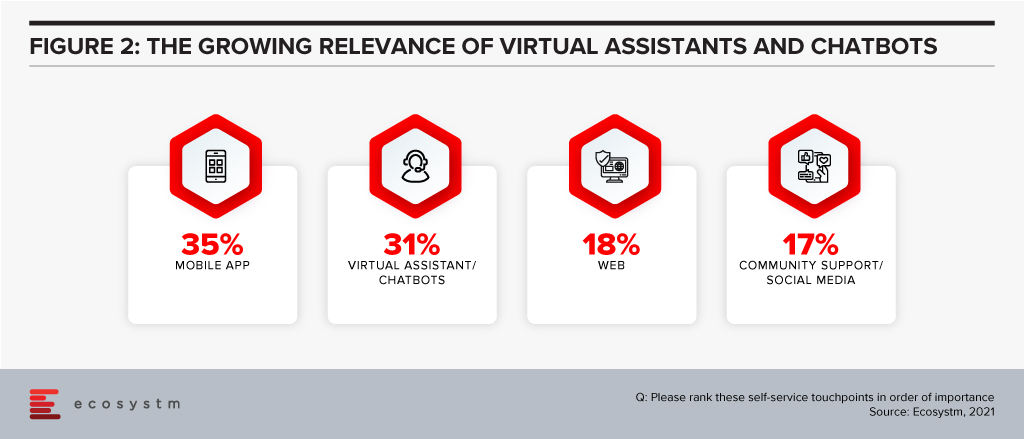
In fact, Zendesk’s global study shows that most customers (45%) use embedded messaging over social messaging apps (31%) and text/SMS (20%). That might be great for self-service, but for commerce, boundless opportunities exist to move to where the customer lives, communicates, and socialises today.
Smart businesses understand that customers spend their lives in other chat and social media platforms – such as Facebook Messenger, TikTok, Instagram, WeChat, Discord and WhatsApp. More customers expect to be served in these channels; they expect to be able to transact with their brands of choice. Why should they go to a mobile banking app to find their balance? Why can’t they get it in WhatsApp? They are often learning about the next Jordan or Yeezy shoe drop from their social network in Messenger – so why not transact with them there? Consider all your own personal WhatsApp, Messenger and other messaging platform groups discussing social activities, sporting teams, school activities or the latest fashion – these are ALL opportunities for commerce (Figure 3).

And there are use cases now. Airlines – such as KLM and Etihad Airways – are engaging customers on WeChat, Kakao Talk, and WhatsApp, helping them reschedule flights and answering customer service queries. Telecommunications providers are allowing customers to raise issues on messaging platforms – and are also using them to upsell and cross-sell new services. Transportation providers are making it easier to find a car or the the next scheduled bus right there in the messaging platforms. Retailers – such as 1-800 Flowers and Culture Kings – are not only serving customers but finding new customers on these messaging platforms.
Going beyond the messaging platforms, businesses are also looking to serve customers on their smart devices – such as Amazon Alexa/Echo and Google Nest/Home devices. Alerting customers to order updates, shipping details and product promotions is becoming standard practice for leading businesses. Digitally-savvy banks are allowing customers to not only track their balance but also make transfers and payments using these smart platforms.
Customers are more comfortable with these conversational commerce options – and they actually expect you to offer such services on your site, in your app, on their smart devices, and on their messaging platforms of choice. Your ability to provide outstanding customer experiences will not only be your ticket back to revenue growth but the recipe for long term business success. Meeting customer needs on their terms is a good place to start.
Delivering a Personalised Conversational Customer Experience
Customer experience (CX) decision-makers will have to rethink how they approach building richer CX capabilities to deliver personalised conversational interactions with customers.
Messaging should become part of a wider AI, Data, and Mobile strategy. Contact centre teams might feel that this is too ambitious a project and would prefer to continue to serve customers through the more traditional channels only. So, it is important to identify the key stakeholder/s who will drive the initiative. And the contact centre team should work with the Digital, Innovation and Marketing teams.
Designing the mobile experience and in app messaging for CX should have some of the following features:
- Ability to click a button to request for a service or escalate an issue that will, in turn, result in the company contacting the customer either by messaging or calling.
- Giving customers the option to contact through popular messaging platforms such as Facebook Messenger, WhatsApp, LINE, WeChat, and others. Unifying these systems in a single interface that integrates with your customer service application is best practice.
- Having one single interface to manage and make payments – within the app itself or on the social messaging platform. Conversational commerce is about creating an ongoing relationship with customers throughout the entire customer journey. Don’t just focus on the sale or the post-sales experience – customers expect to be able to interact with your business from their platform of choice regardless of their need or stage in the customer journey.
- Embed deep analytics into the communication services to help the organisation better deliver a personalised CX.
- Ensure you have a solid, unified knowledge management interface at the backend so that all questions lead to the same answers regardless of channel, platform or touchpoint.
Your opportunity to drive greater business success lies in your ability to better win, serve and retain your customers. Refresh your customer strategy and capability today to make 2021 an exceptional year for your business.

Last week Salesforce announced that they will acquire Slack in a deal worth approximately USD 27.7 billion in their biggest purchase ever. Salesforce aims to ease the communication and collaboration process for information workflow across business apps and systems by integrating Slack into Salesforce cloud – Slack is set to be the new interface for Salesforce Customer 360. The deal is expected to complete in 2021, after shareholder and regulatory approvals.
Slack has carved a market presence as an all-in-one platform for voice, video, and collaboration. The acquisition of Slack will help Salesforce provide a more comprehensive services offering in a fast-growing SaaS business market.
Salesforce Continues to Broaden Horizon
Salesforce has been diversifying their offerings steadily over the last few years. Salesforce launched Chatter, the industry’s first cloud-based enterprise social collaboration application platform in 2010 globally; acquired cloud based word processing application Quip in 2016 for about USD $750 million; acquired Mulesoft in 2018, to unlock an entry into hybrid deployments and on-premises software. In 2019, Salesforce acquired Tableau – a leader in data visualisation for nearly USD 15.7 billion purchase and recently announced Salesforce Anywhere as innovation across Customer 360 to enable remote working.
With the acquisition of Slack, Salesforce is making a move to further develop their presence in the enterprise space – an area where Microsoft has an advantage with their Microsoft Teams and a suite of enterprise solutions.
Ecosystm Comments
The challenges to make the Slack acquisition valuable for Salesforce are many and difficult (and the significant hit to their share price reflects the market perception of these challenges). Many believe that Salesforce will be able to better compete with Microsoft due to the larger enterprise base and the larger enterprise salesforce. But that didn’t help Google accelerate into the cloud collaboration space. They sell advertising into many millions of enterprises across the globe – but selling advertising and selling collaboration platforms takes a very different capability to a very different audience. Salesforce sometimes prides itself on the fact that their buyers are NOT from IT – they are the heads of sales, marketing, customer experience etc. Attend any Salesforce event and you understand that only a small fraction of their audience are technology professionals. But these technology professionals are the ones who buy communications and collaboration tools and suites. They were the ones who turned to Microsoft Teams en-masse towards the beginning of the pandemic.
Possibly the biggest opportunity for Salesforce is to make Slack the default application interface for their applications and processes. One of the Salesforce’s ongoing challenges is the fact that – despite how easy to use or attractive their interface is – many users don’t want to use it! Salespeople want to sell; marketing people want to drive market outcomes. Salesforce supports these processes – but it can also get in the way (when not designed effectively). Slack gives Salesforce (and other application companies) a standard interface to provide the information employees and customers want or need in context. For example, instead of an email to HR asking for leave balance – or even needing to login to the time management systems – a user could ask a Salesforce (or other application) chatbot how much leave they have remaining for the year; a salesperson could ask what their best opportunities are. And in a chat or a collaboration session, Salesforce could feed data or insights directly into the conversation or alongside it.
Application switching is still one of the biggest killers of productivity. The era of the “zero-interface” application is quickly approaching – and the Slack acquisition gives Salesforce the ability to accelerate its move to this era. It also gives Salesforce the ability to extend the use of its core platform beyond the traditional users to the broader workforce.
Download Ecosystm Predicts: The Top 5 Cloud Trends for 2021
The full findings and implications of The Top 5 Cloud Trends for 2021 are available for download from the Ecosystm platform. Signup for Free to download the report.

Ecosystm recently partnered with Asavie to conduct a study into the opportunity and outlook for the “Branch of One”. One of the challenges was actually defining what the Branch of One is. Here’s what we came up with:
Branch of One enables Office Anywhere by delivering secure, frictionless access to all business resources, with full mobility – meeting the security and manageability requirements of CIOs and CISOs.
Basically it is all the data and systems you need to get your job done, in your pocket. Secure. Easy to manage.
What I really like about the idea is that it describes what business is trying to achieve and it gives a common language and outcome for IT and business leaders. Consider all the things that IT and security teams need to do to enable access to applications and data in remote branches – from connectivity to security to data and system access. Often it takes days, weeks or months to open a new office or branch, or to provision a new retail store. Now, imagine having the ability to roll out all of these systems and services in seconds. To a single user or to thousands. Without consideration for location. Business leaders will understand this benefits and will support it.
It also has the opportunity to help nearly every business today. Of the 1005 businesses we interviewed across the globe in our Global CxO Study 2020, 44% admitted to suffering cyber-attack incidents during COVID-19 due to employees working from home – and over half of these attacks were on mobile devices. Compromised devices were the number one target for cyber-attacks in 2020.

Businesses need a new way to manage the devices and applications of their remote employees. They need to be able to extend the benefits of the WAN to them without the downsides of VPNs. Every business we interviewed saw benefits of bringing devices, locations and offices inside the WAN. Turning every device and office into a Branch of One.

A few security and network technologies have promised this capability – SDNs can offer a similar service, but they require client software to be installed. 78% of businesses we interviewed are using VPNs to bring devices inside the WAN – but again, they require client software, and can be inconsistent (and insecure!) on mobile devices.
Companies that embrace the Branch of One can provision new users in a few clicks. No software to install, no cables to connect, no hardware to provision – it makes life easier for technology and security professionals. The Branch of One gives your employees the systems and data they need to get their job done – delivered securely across the mobile network.
Download the report based on ‘The Global CxO Study 2020: The Future of the Secure Office Anywhere’, conducted by Ecosystm on behalf of Asavie. The report presents the key findings of the study and analyses the market perceptions of Office Anywhere and the need for a ‘Branch of One’, which will be the foundation of enterprise mobile security in the future.

Telstra, Australia’s leading telecom provider has revealed its plans to split into 3 different units which would operate under the umbrella of the Telstra Group. The restructuring – scheduled to be completed by 2021 – is said to be the telecom giant’s biggest restructuring since 1997. The primary reason behind the move appears to be to spin off its infrastructure assets to realise their full value as competition intensifies.
In 2018, the Telstra2022 plan defined a four-pillar strategy to improve business, network superiority, cost improvements and respond to market dynamics for the next three years including the establishment of InfraCo and Global Business Services. Telstra established its standalone infrastructure unit, Telstra InfraCo to hold its fixed network assets. As a part of its recent announcement, Telstra’s infrastructure business InfraCo will split into two units – InfraCo Fixed which will run and manage Telstra’s physical infrastructure assets including data centres, ducts, fibres, undersea cables, and exchanges; and InfraCo Towers which will own and operate Telstra’s mobile towers and infrastructure. Meanwhile, the third unit ServeCo will focus on products and services for the consumer and retail businesses. The company is also investigating ways to push into renewable energy, with plans to exploit its renewable energy investments to re-sell cheaper energy to its customers.
This restructure, should it go ahead as described, is likely to be the biggest legacy that the current CEO, Andy Penn, leaves on the business. Recent CEOs have left a significant legacy on Telstra. Sol Trujillo – who admittedly had a rocky relationship with the Australian Government, which culminated in the conception of the National Broadband Network (NBN) – drove significant changes in Telstra; rationalising mobile and fixed network investments, driving focus back into the business and building an economically rational business. David Thodey was the great peacemaker, driving pride back into the Telstra staff and customers; he turned Telstra into one of the most customer-centric businesses in Australia in his time, laying the foundation for its ongoing success. Andy Penn has made some significant changes to Telstra, further reducing the cost base to turn it into a more competitive business – but until now, he has not significantly transformed the core business.
This changes now. Telstra ServeCo will build on the customer-obsessed culture of the Telstra sales and service business – one that consistently scores above market average for NPS in both the business/enterprise and the consumer markets. One can even envision a day in the future where ServeCo will be in a position to sell the best network solutions and services in Australia – some of which might not even be owned or controlled by InfraCo. It already does that with the NBN – this may extend to reselling other telecom services too.
InfraCo Fixed will build on the strong engineering legacy that Telstra still has – and will give it the chance to flourish – and not be dictated by customer buying cycles. Ideally investment cycles can be separated from direct customer revenue, and the company can rebuild the network lead that it has traditionally experienced, but which has been eroded over the past 3-4 years (in mobile by Optus and in fixed telecoms by NBN).
InfraCo Towers should be well-positioned to become the core tower provider in Australia. This business makes the most sense to spin off in the medium term. The buildout of multiple – nearly identical – tower networks by the three major 4/5G providers is wasteful and inefficient. 5G in particular, requires a very different tower footprint than 3G or 4G – so having a single provider of shared tower infrastructure will reduce costs for all telecom providers while creating a healthy business for shareholders. As an independent provider of towers, InfraCo Towers should always be the most affordable option – Optus, Telstra and Vodafone would be foolish to attempt to replicate and manage their own similar tower infrastructure.
The NBN-Telstra Dynamics
While Telstra dominates the Australian telecommunications market, their business is also under pressure due to the state-owned NBN. In 2019, Communications Minister Paul Fletcher ruled out selling the NBN to Telstra. However, the new structure has likely been designed with this in mind – with perhaps the option to spin off the InfraCo Fixed unit and merge this with a privatised NBN or perhaps to even the separation of the business units enough to satisfy a future government of the merits of selling NBN to Telstra and merging it with the InfraCo Fixed unit. The question surely needs to be asked what the difference is between a private business with a monopoly on home broadband access and Telstra having that monopoly?
This restructure will help Telstra build a telco for the next ten years. One where agility will be core to its success. The challenge – like with any big transformation – will be to take the employees and the customers on that journey. Employees need to believe that this structure is the right one and that their skills are required and relevant. Customers need to see benefits from this restructure too – ideally, they will see that the service promise of Telstra is delivered in the network and capabilities. Hopefully, they will see a stronger Telstra that can continue to drive the levels of innovation and investment that digitally savvy customers demand.

The past 3-4 months have seen technology leaders move mountains to support their newly remote employees and 100% digital customers. Over 40% of businesses in the Asia Pacific didn’t formally support remote working – so these companies have made massive changes in support of their employees. You have rolled out new hardware, new data protection and compliance policies, new security measures, collaboration software and VPNs. You have also strengthened the IT Helpdesk to better support remote employees and digital customer processes. And you are embracing the public cloud to offer new services and capabilities to customers and staff. The pace of change has been breathtaking – and things are not slowing down.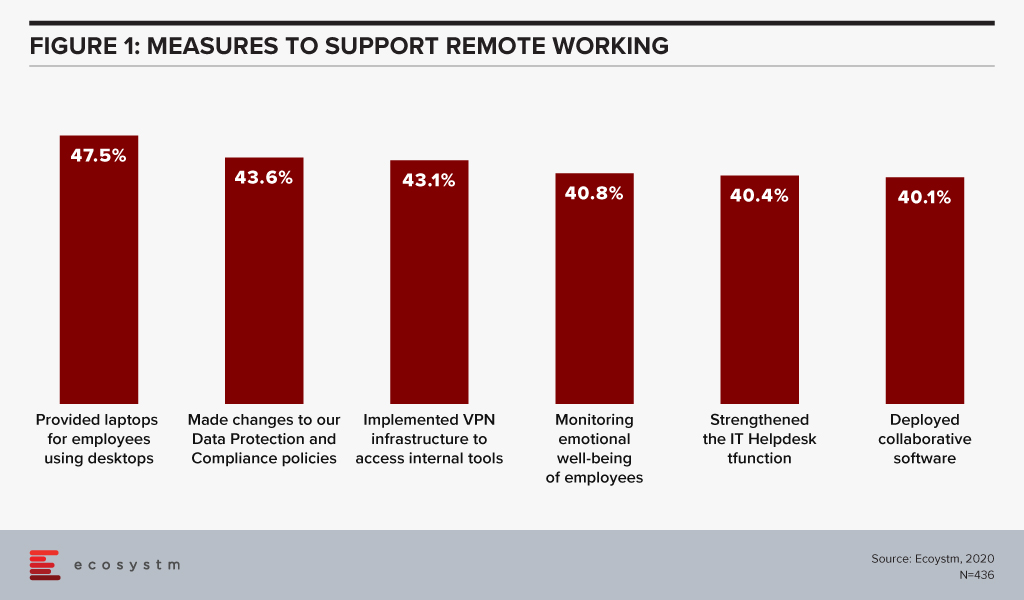
Many countries or economies are now moving to a hybrid working arrangement. This ISN’T about “going back to the way things were”. Hybrid working is really an important step on the road to the Digital Workplace – which enables access to the tools, data and processes that employees need to get their job done regardless of location or device.

Many businesses claim that productivity has improved now that employees are working from home – some have even measured it and can prove it. We have to ensure that the move back to the office doesn’t negatively impact productivity. To drive continued productivity with hybrid working arrangements, consider:
- How will video calls work with employees in the office and at home? If employees in the office are docking their laptops, they immediately lose access to the camera. If they have monitors on their desk, they might not even be able to work with the laptop open. If they are in an open-plan office, the regular video calls might be distracting.
- What is the role of meeting rooms in the hybrid workplace? With social distancing an expectation in many countries today, the role of meeting rooms has changed. They will cater for fewer employees, and there is a growing need for them to be video-enabled.
- How do you manage hybrid meetings – where maybe 3-5 employees are on a single camera? How do you ensure every voice has equal weight – and that the right employees have their fair share of voice on the calls.
- How do you support employees who are moving between locations? You must focus on self-help services and automating as much of your Service Desk capabilities as possible.
- How can IT support social distancing in the office? Many companies are scaling back their hot desk environments to ensure there are fewer shared working environments.
- How will the changing location of employees impact business processes? Many of your processes were designed assuming employees were on site. You then redesigned many of them to assume they were not. Do you need to rethink them again?
- Does the application strategy work for all employees? There has been an increase in employees accessing applications from mobile devices – sometimes that was because it was a better experience, but too often it was because it was the only option. Is it time to rethink access and interfaces to make them relevant for all users?
- How do you keep employees and their data secure? Employees might move between secure and unsecured networks, work and home devices, on-premise and cloud applications. How do you keep them secure, backed up and synchronised – regardless of their device or location?
The move to hybrid working might not be a smooth one. The last thing you want to deliver is a poorer experience at one location versus the other, so you have work ahead in keeping your employees productive and secure – and hopefully, you’ll also move further down the path towards a Digital Workplace that can enable and empower all of your employees.




